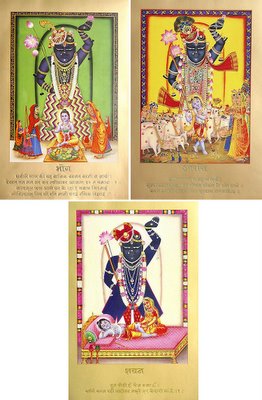MahaShivRatri

Origin Of Shivratri
According to the Puranas, during the great mythical churning of the ocean called Samudra Manthan, a pot of poison emerged from the ocean. The gods and the demons were terrified as it could destroy the entire world. When they ran to Shiva for help, he in order to protect the world, drank the deadly poison but held it in his throat instead of swallowing it. This turned his throat blue, and since then he came to be known as Nilkantha, the blue-throated one. Shivratri celebrates this event by which Shiva saved the world.
A Festival Especially For Women
Shivratri is considered especially auspicious for women. Married women pray for the well being of their husbands and sons, while unmarried women pray for an ideal husband like Shiva, who is the spouse of Kali, Parvati and Durga. But generally it is believed that anyone who utters the name of Shiva during Shivratri with pure devotion is freed from all sins. He or she reaches the abode of Shiva and is liberated from the cycle of birth and death.
Shiva Rituals
On the day of Shivratri, a three-tiered platform is built around a fire. The topmost plank represents swargaloka (heaven), the middle one antarikshaloka (space) and the bottom one bhuloka (earth). Eleven urns or kalash, are kept on the swargaloka plank symbolising the eleven manifestations of the Rudra Shiva. These are decorated with bilva (woodapple leaves) and mango leaves atop a coconut representing the head of Shiva. The uncut shank of the coconut symbolises his tangled hair and the three spots on the fruit Shiva's three eyes.
Bathing The Phallus
The phallus symbol representing Shiva is called the lingam. It is usually made of granite, soapstone, quartz, marble or metal, and has a yoni or vagina as its base representing the union of the male and female sexual organs. Devotees circumambulate the lingam and worship it throughout the night. It is bathed every three hours with the five sacred offerings of a cow, called the panchagavya - milk, sour milk, urine, butter and dung. Then the five foods of immortality - milk, clarified butter, curd, honey and sugar are placed before the lingam. Dhatura and jati, though poisonous fruits, are believed to be sacred to Shiva and thus offered to him.
"Om Namah Shivaya!"
All through the day the devotees keep severe fast, chant the sacred Panchakshara mantra "Om Namah Shivaya", make offerings of flowers and incense to the Lord amidst ringing of temple bells. They maintain long vigils during the night, keeping awake to listen to stories, hymns and songs. The fast is broken only the next morning, after the nightlong worship. In Kashmir, the festival is held for 15 days. The 13th day is observed as a day of fast followed by a family feast.
As we know that Maha Shivratri, the night of the worship of Shiva, occurs on the 14th night of the new moon during the dark half of the month of Phalguna (Feb / March) when Hindus offer special prayer to the lord of destruction.
Here're three reasons to celebrate Shivratri:
1. The absolute formless God, Sadashiv appeared in the form of "Lingodbhav Moorti" exactly at midnight on Maha Shivratri. That is why all Shiv devotees keep vigil during the night of Shivratri and do "Shivlingam abhishekham" (coronation of the phallic idol) at midnight.
Did You Know?
God in his manifestation as Vishnu made his appearance as Krishna at Gokul at midnight, 180 days after Shivratri, commonly known as Janmashtami. Thus, the circle of one year is divided into two by these two auspicious days of the Hindu Calendar.
2. Lord Shiva was married to Devi Parvati on Shivratri. Remember Shiva minus Parvati is pure Nirgun Brahman. With his illusive power, (Maya, Parvati) He becomes the "Sagun Brahman" for the purpose of the pious devotion of his devotees.
3. It is also believed that on Shivratri, Lord Shiva became Neelkantham by swallowing the deadly poison that came up from the ocean during the churning of "Kshir Sagar". The poison was so deadly that even a drop in His stomach, which represents the universe, would have annihilated the entire world. Hence, He held it in His neck, which turned blue due to the effect of poison. Shivratri is therefore also a day of thanksgiving to the Lord for protecting us from annihilation.
The 14th shloka of Shivmahimna Stotra says: "O three eyed Lord, when the poison came up through the churning of the Ocean by the gods and demons, they were all aghast with fear as if the untimely end of all creation was imminent. In your kindness, you drank all the poison that still makes your throat blue. O Lord, even this blue mark does but increase your glory. What is apparently a blemish becomes an ornament in one intent on ridding the world of fear."




























